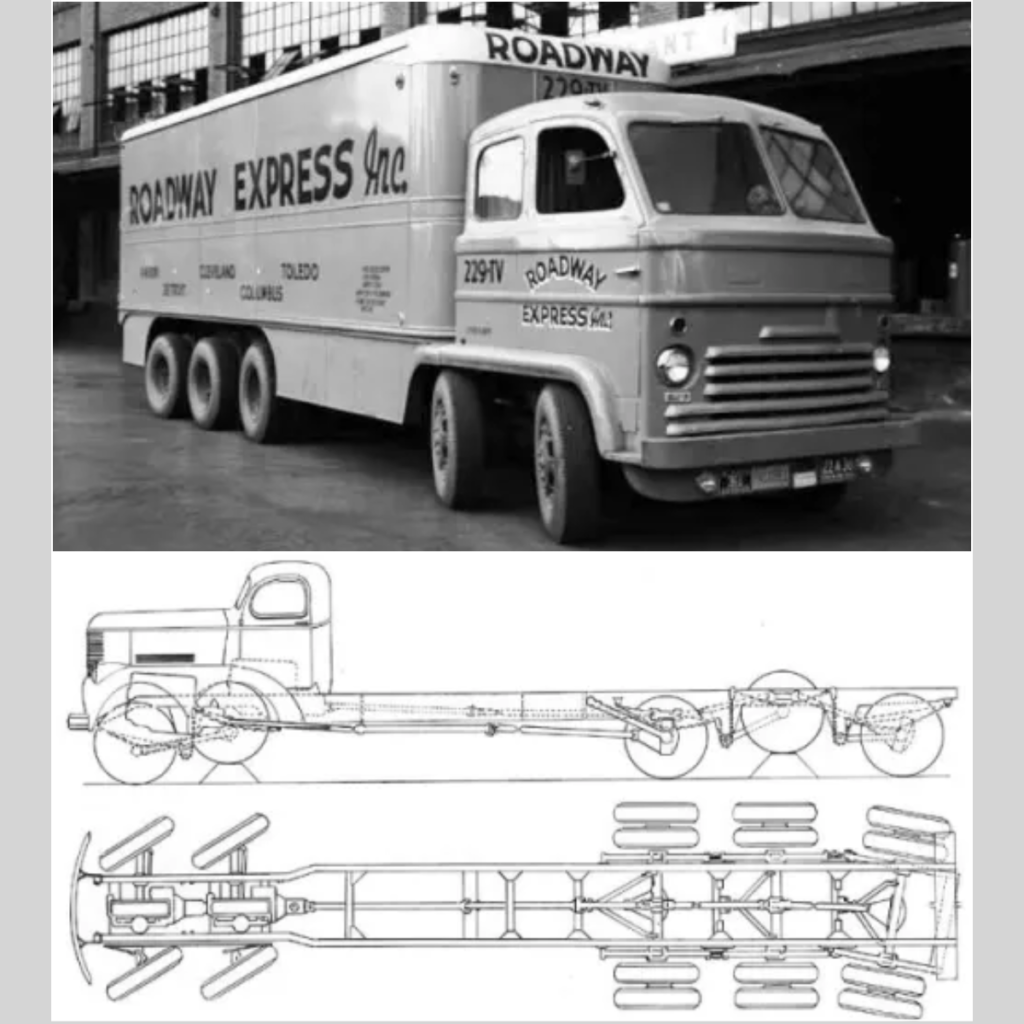
Twin Engines and Eight-Wheel Drive: The Eisenhauer Freighter
 Feast your eyes on one of the most unusual motor trucks ever conceived. Ladies and gentlemen, we present the Eisenhauer Freighter.
Feast your eyes on one of the most unusual motor trucks ever conceived. Ladies and gentlemen, we present the Eisenhauer Freighter.
In the pleasant little town of Van Wert, Ohio near the Ohio-Indiana border, there’s an enterprise called the Eisenhauer Manufacturing Company with a tradition of thinking outside the box. The company got its start during World War II supplying the military with bogie wheels for army tanks, while today it manufactures specialized precision stampings of all kinds for the auto industry. And between 1946 and 1957, the family-owned firm developed a most unusual prototype truck it called the Eisenhauer Freighter, featuring twin engines, eight-wheel drive, and three steering axles. Here’s the intriguing story.
 The first truck constructed at Eisenhauer’s experimental shop in 1946 was based on Chevrolet 1.5-ton truck components—two complete new trucks were disassembled for parts, reportedly, including their engines and drivetrains. While never commonplace, twin-engine trucks were sporadically built for extreme-duty applications in the ’30s through the ’50s. High-output diesel engines were still relatively expensive and unproven, and a pair of conventional gasoline engines was seen as one alternative.
The first truck constructed at Eisenhauer’s experimental shop in 1946 was based on Chevrolet 1.5-ton truck components—two complete new trucks were disassembled for parts, reportedly, including their engines and drivetrains. While never commonplace, twin-engine trucks were sporadically built for extreme-duty applications in the ’30s through the ’50s. High-output diesel engines were still relatively expensive and unproven, and a pair of conventional gasoline engines was seen as one alternative.
While the company’s publicity materials show a variety of body types, that was accomplished with clever photo retouching. Only one prototype truck was actually built and it carried the cargo box above, with a rated capacity of 20 tons.
 The schematic drawing above provides a rundown on the chassis layout. A pair of Chevrolet 235 cubic inch sixes, complete with separate transmissions and producing 93 horsepower each, could be operated in single or tandem configuration. When running together, the two engines were roughly synchronized by a vacuum-operated governor, or the truck could be run on a single engine when unloaded to save fuel.
The schematic drawing above provides a rundown on the chassis layout. A pair of Chevrolet 235 cubic inch sixes, complete with separate transmissions and producing 93 horsepower each, could be operated in single or tandem configuration. When running together, the two engines were roughly synchronized by a vacuum-operated governor, or the truck could be run on a single engine when unloaded to save fuel.
The twin engines delivered motive power to differentials on the first and third live axles at the rear. Meanwhile, three axles provided steering: the front two via parallelogram geometry and the rearmost axle with a simple wagon-steering arrangement. For backing up, the hindmost axle could be locked in the straight position. In a nutshell, the novel steering setup was intended to give a conventional straight truck chassis the maneuverability of a semi-tractor rig. We’d love to see how it worked in practice.
While the original 1946 Eisenhauer Freighter found no customers, evidently, the company made another run at the concept in 1957 with a series of five experimental vehicles, including several that were supplied to the U.S. Army for trials, below. These trucks, designated X-2, used the same general configuration as the 1946 prototype, but with a side-by-side engine layout using GMC 302 CID sixes and GM Hydra-Matic automatic transmissions. While this second effort was also unsuccessful, the Ohio manufacturer remains justifiably proud of the innovative project.
